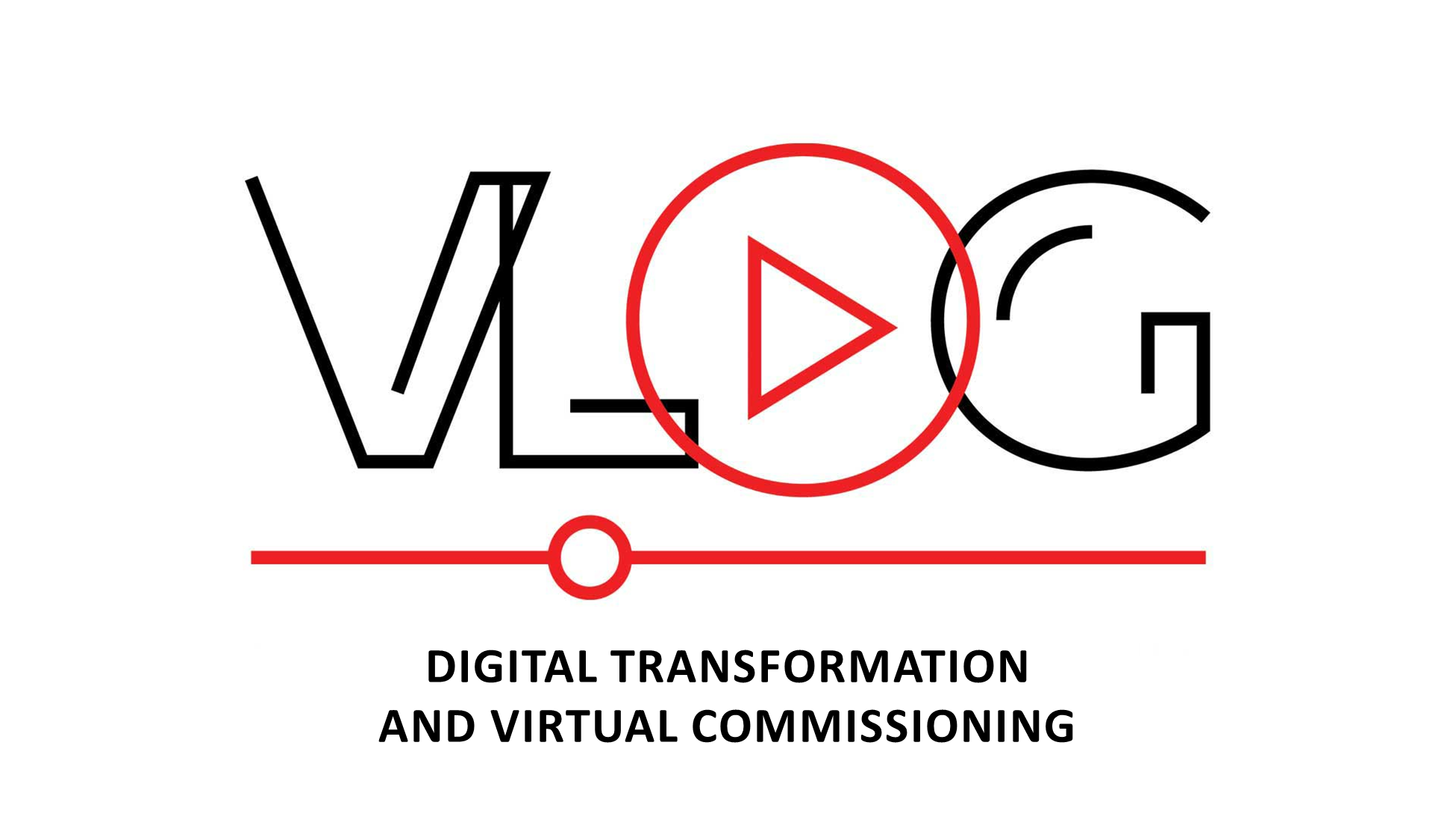
How does virtual commissioning play into digital transformation? It’s a term almost everybody is using nowadays. Let’s talk about that next.
So, let’s talk about digital transformation and virtual commissioning. They’re both initiatives, although one is on a little bit of a different level than the other. Digital transformation is often seen as this overarching initiative definition. There are a lot of things that can fall underneath it.
What’s Included in the Digital Transformation?
- System simulation
- Predictive maintenance, which is way down into operation and service
- Model based definition, which is a documentation effort or initiative for mechanical hardware
- Model-based systems engineering, which is all about getting a single unambiguous definition of a system
- Digital twins, which is where you take sensor readings and feed that back into a simulation to mimic real world behavior
- Smart manufacturing, where you get sensors all over the manufacturing shop floor and use that for analytics and all sorts of other stuff
- Generative design, where AI and machine learning can be used to generate mechanical designs
- Virtual commissioning, which is one of these initiatives that kind of fall under the umbrella of digital transformation
Okay, so virtual commissioning falls underneath digital transformation. What’s the big deal? Why is that important?
Well, digital transformation is kind of undergoing this rising tide of recognition in the industry. A lot of executives might not know what system simulation or model based definitions are, but overall, all these other initiatives are being coined as part of digital transformation. As a result, the recognition of digital transformation is rising overall and executives recognize that a lot of their peers are going through similar efforts in other companies within the industry.
Why does that matter? Well, if you’re trying to get a virtual commissioning effort going in your company, this is a good way to help justify it. Virtual commissioning has all sorts of benefits in its own right, but as part of a larger digital transformation effort you might get more headway with executives getting sign off and getting things approved along the way – that’s the advantage here.
Now when you think about all the different efforts underneath digital transformation, there are actually some common value propositions to each of them. This common value proposition relies on a comparison to the traditional physical way of doing things today – the established approach. That usually relies on some effort up front, maybe multiple definitions where there’s some confusion or not a lot of insight into performance. When you hit a later stage in development, that’s when an issue occurs and you see this back-loaded effort where, suddenly, you have to throw a whole lot of resources at an issue to resolve it. That results in delays, cost overruns, and all sorts of issues.
So, this is called lots of different things, such as “get it right the first time”, “shift left”, right by design – many different names. The idea is that you put more effort up front and you ensure that you have a clear definition, and clear insight into performance.
You can do these lots of different ways, but these are digital approaches, and along the way you have confidence through the middle phases until you get to later phases, and you don’t end up with surprises. This is a very common value proposition behind these initiatives and these kind of efforts.
So, What’s the Overall Takeaway?
- Virtual commissioning is part of a digital transformation effort. It’s something that your executives are more likely to recognize, and as a result maybe sign off on it faster.
- Virtual commissioning relies on the same kind of value proposition that you see in a lot of digital transformation efforts. It’s all about getting it right the first time, right by design, shift left… You put in a little bit more digital effort to avoid a lot of errors and problems late in the design cycle. That is important because you can go to executives, and they’re probably going to be familiar with this concept. This value proposition applies to simulation driven design, system simulation, model-based system engineering, model-based definitions – the list goes on and on and on.
With virtual commissioning, you do a little bit more work earlier, in a digital way, that when you get to the physical stuff, it’s streamlined and goes smoothly. You don’t run into a whole bunch of problems, so you can leverage that with your executives. They’re going to have some familiarity, and you can say “Hey, this is just like when we adopted simulation driven design, except it’s with production engineering. That’s what virtual commissioning is like.” You can use that muscle memory, and people are going to recognize it with your executives.
That’s the value! That’s it.






